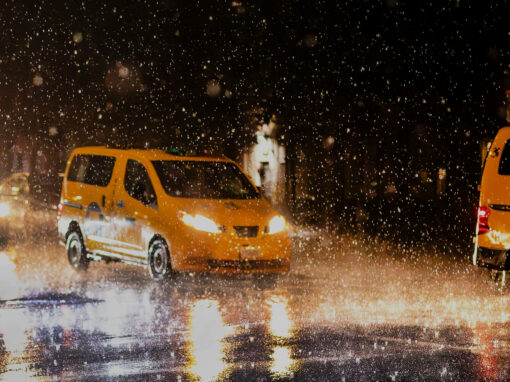It would be difficult to say anything good came out of the COVID-19 pandemic. The disruption, the loss of life, and the global chaos deeply affected everybody. Yet, it would also be difficult to say the pandemic didn’t reorient a lot of art of every sort. The isolations forced rethinkings. Close one door, the old saying goes, and a new window opens.
“Relative Strangers” by Teri Vershel
Published by Daylight Books, 2024
Review by W. Scott Olsen

In photography, the pandemic turned artists toward new perspectives. Street photographers tried their hands at still life. Portrait photographers took a shot at landscapes. A great many of us went to our archives to remember in part a time before the disaster.
And then a curious thing happened. In looking at our archives, we also rediscovered a bit of ourselves. Art is transformative, always. Every day we get a little bit older, every day we have a little bit more experience, is a day we have a fresh insight which can be retrofitted to our lives. We can look back at who we were, through the lens of who we are, and see things it would have been impossible to know at the time.
It’s called perspective. Sometimes, it’s even called wisdom.
I’m thinking about this at the moment because I have on my desk a book called Relative Strangers by Teri Vershel. Relative Strangers is a book of street photography filled with color and action. The images are from a variety of places: New York, San Francisco, Chicago, Palo Alto, Los Angeles, Vancouver, Santa Monica, and Barcelona. The list goes on. And Vershel is a talented street photographer. The colors are vibrant, not over-saturated, and they pop. There is an energy in the images, not only from situations being captured through a viewfinder but in the expressive use of color tonality. It’s simply a great joy to look at these images.

In a brief foreword, Sam Abell offers a description and celebration of street photography and compares Vershel’s work to George Gershwin’s Rhapsody in Blue. He’s right to assign a type of jazz energy to Vershel’s images. He says,
When I look at Teri Vershel’s images, I hear music. It’s the energetic, deliberately dissonant, and jazz-influenced first eleven minutes of George Gershwin’s Rhapsody in Blue. These are the minutes that changed the direction of American music. They did so by being musically faithful to the reality of contemporary urban life.
The essence of that reality is the vibrant American street in all its clashing, colorful flow. Gershwin rendered that reality in music, Teri does it in her photographs.
Vershel’s work is certainly energetic and celebratory. But there’s a paragraph later in the forward, which is a bit more telling. It reads,
Each of Teri’s images can and should be read like this: as a standalone, aesthetic experience. But the design of this book offers another intriguing opportunity. And that is to see individual images as one half of an arresting duet. By pairing Teri’s images, new patterns–of content, color, texture and graphics—emerge. The succession of these pairings builds into a fresh, original portrait of street life.

Exactly. Think of the book’s title: Relative Strangers. The individual images, as strong as they are, have nothing to do with each other. But put them next to each other, and suddenly, you have a relationship that sings.
This idea is echoed in an Afterword by Vershel, where she explains,
During the COVID lockdown of 2020, when shooting on the street was not feasible, I decided to make my own book of photographic pairings. I sorted through my archive looking for images that might work well when presented next to each other. As I looked, I found many similarities and gestures and geometry, colors and quality of light. It struck me that while the people in my photographs are strangers, by comparison they are often related.
This idea that the images have a relation to each other and yet are strangers, is the real source of genius and joy in this book. This book is, frankly, a lot of fun, and every turn of the page is rewarding.

It is true that Vershel’s street photography, when viewed as individual images, is talented. She has a good eye and a fine sense of composition, and the images are all quirky enough to reward sustained viewing. There are details of crowd scenes, individual portraits, and situations that simply make me feel the kind of jazz energy Abell talks about.
But that’s not really what makes this book special. What makes this book special is that because of COVID-19, Vershel took the opportunity to go through her oeuvre and say this works with that.
The pairings are rich and intriguing. In one pairing, the stripes on someone’s shirt in the left-hand image are echoed by the patterns and steel doors in the right-hand image. In another pairing, a pedestrian in the left side image carries red and white Valentine’s balloons, while the image on the right shows red Chinese lanterns reflected in a car window. In one left-hand picture, the fur on the legs of a standard Dalmatian is dyed orange, and on the right-hand page, a woman wears a bright orange furry coat. In another set, a silhouetted man carries red shopping bags on the left, while on the right, two small dogs wear red coats.


It’s not a new idea to have images in a book speak to each other across the book’s gutter—those relationships have long been a consideration of book designers. Relative Strangers, however, makes the relationship more an ancillary. Here, that relation is the point. Some of the pairings are simply funny. Some of them are insightful and profound. The pairings often have to do more with color than situation and more to do with shape and geometry than sociology.
I find myself going through this book wondering about the very many ways we define community, the very many ways we are finally very similar people. Even in the dour expressions of people working the windows at food trucks, for example, we can find joy in our agreements.
Relative Strangers is one of those photo books that asks to be considered in a space beyond just the image. The question in this book is not what’s going on here, only. It’s what’s going on here, what’s going on over there, and what does the comparison provoke in my heart and soul? It is an entertaining book, oftentimes illuminating a sense of curiosity and wonder.

A note from FRAMES: Please let us know if you have an upcoming or recently published photography book.





kim
February 18, 2025 at 04:22
Thank you for your analysis and deep thinking on why Teri’s photos feel so good! It’s her eye, her love of people, her curating, her patience – waiting for the shot that meets her criteria. It’s Teri capturing a place in time with photos!
Teri
February 25, 2025 at 23:26
Thank you for the very moving review of my book. I truly appreciate the thoughtful analysis and discussion of my work. I felt like the reviewer really understood where I was coming from.